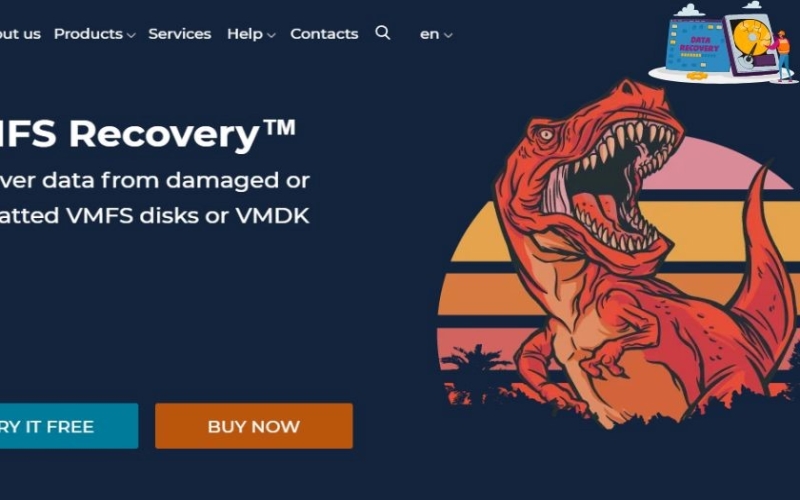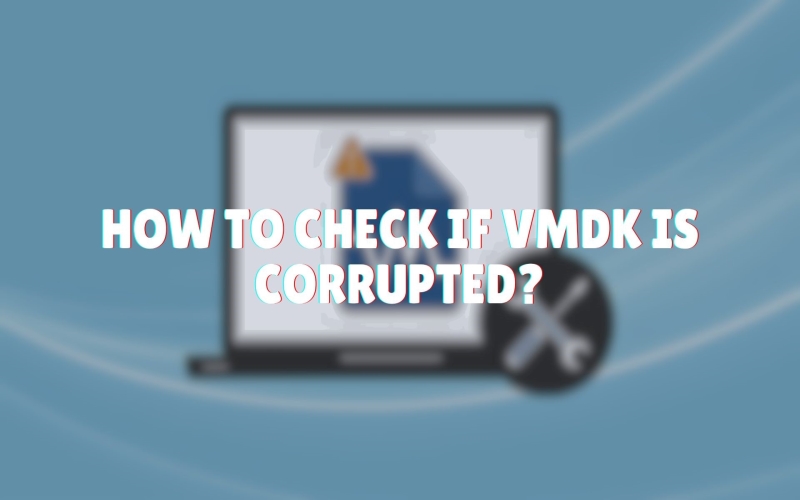VMDK (Virtual Machine Disk) files are disk image files used by VMware to store the virtual hard disks of virtual machines. These files contain the entire contents of the virtual machine’s hard disk, including the operating system, applications, and data. VMDK files are crucial components of VMware-based virtualization environments, as they provide the storage for virtual machines.
Ensuring the integrity of VMDK files is essential for the proper functioning and reliability of virtual machines. Corrupted VMDK files can lead to various issues, such as virtual machine crashes, data loss, or performance degradation. It is crucial to regularly check the integrity of VMDK files to detect and address any potential corruption before it causes more severe problems.
VMDK corruption can occur due to various reasons, including power outages, hardware failures, software bugs, or improper shutdowns. Power outages or abrupt system shutdowns can leave VMDK files in an inconsistent state, potentially leading to corruption. Hardware failures, such as disk errors or memory issues, can also cause corruption in VMDK files. Additionally, software bugs or compatibility issues with VMware or related software may introduce corruption in VMDK files.
Visual Inspection
The first step in checking for VMDK corruption is to launch the VMware application, such as VMware Workstation, VMware Fusion, or VMware vSphere Client, depending on your VMware product.
Once the VMware application is running, open the virtual machine in question. This can typically be done by selecting the virtual machine from the list of available virtual machines and clicking the “Power On” or “Start” button.
During the boot process and while the virtual machine is running, pay close attention to any error messages or warning signs that may appear. VMware may display error messages or warnings related to disk corruption or other issues with the VMDK file.
Observe the virtual machine’s behavior and performance after it has booted up. If the VMDK file is corrupted, you may notice abnormal behavior, such as sluggish performance, application crashes, or unexpected errors.
VMware Disk Integrity Check
Before performing the disk integrity check, ensure that the virtual machine is powered off. This step is crucial to avoid potential data corruption or inconsistencies during the check. Open the VMware vSphere Client or the vSphere Web Client, depending on your VMware environment. These applications provide access to the virtual machine’s settings and management features.
In the VMware application, navigate to the settings or configuration of the virtual machine in question. Locate the virtual disk (VMDK file) that you want to check for corruption. This may be listed under the “Hard Disk” or “Virtual Hardware” section. Once you have selected the VMDK file, look for an option labeled “Check Disk Integrity” or something similar. This feature is designed to scan the VMDK file for potential corruption or inconsistencies.
After initiating the disk integrity check, VMware will scan the VMDK file and provide the results. Carefully review the results, as they may indicate errors, warnings, or success messages. Errors or warnings may indicate corruption or issues with the VMDK file, while a successful result suggests that the file is intact.
Third-Party Tools

While VMware provides built-in tools for checking VMDK integrity, there are also several third-party tools that can be useful for this purpose.
Some popular third-party tools include:
- DiskInternals VMFS Recovery DriveSavers offers the most reliable and fastest certified data recovery service in the industry for VMware virtual infrastructures, servers, and workstations.DriveSavers is a trusted and authorized VMware partner, helping customers recover data loss from VMware systems every day.
- VMware Converter: This tool is primarily used for converting virtual machines between different formats, but it also includes features for checking the integrity of VMDK files.
- VMware OVF Tool: The Open Virtualization Format (OVF) Tool is a command-line utility that can be used to validate and inspect OVF packages, which may include VMDK files.
Here are step-by-step instructions for using VMware Data Recovery:
- Launch VMware Data Recovery – Open the VMware Data Recovery application on your system.
- Select Recovery Point – Choose the recovery point you want to use for data recovery. This could be a backup, snapshot, or replica of your virtual machine.
- Select Virtual Machine – Choose the specific virtual machine from which you want to recover data.
- Start File Level Recovery Wizard – Click the “File Level Recovery” option to initiate the file recovery process.
- Browse Virtual Machine Disks – The wizard will mount the virtual disks, allowing you to browse the file system of the virtual machine.
- Select Files/Folders for Recovery – Navigate through the virtual disk and select the specific files and folders you want to recover.
- Choose Recovery Location – Specify the location on your local system or network share where you want to recover the selected files and folders.
- Configure Recovery Options – You may have additional options to configure, such as handling conflicts with existing files or preserving file permissions and attributes.
- Start Recovery Process – Review the summary and click “Finish” to initiate the recovery process. VMware Data Recovery will start copying the selected files and folders to the specified location.
- Monitor Recovery Progress – A progress window will display the status of the recovery operation. You can monitor the progress and view any errors or warnings that may occur.
- Verify Recovered Data – Once the recovery process is complete, navigate to the specified recovery location and verify that the recovered files and folders are present and intact.
- Close VMware Data Recovery – After verifying the recovered data, you can close the VMware Data Recovery application.
When using these third-party tools, pay close attention to any error messages, warnings, or log entries related to disk integrity or corruption. These tools may provide more detailed information about the nature and location of any issues with the VMDK file.
Advanced Techniques
In some cases, you may want to perform more advanced checks on the VMDK file by mounting it as a virtual disk on your host system. This technique allows you to access the contents of the virtual disk directly and run file system checks or other diagnostics.
To mount a VMDK file as a virtual disk, you can use tools like VMware Disk Mount (mentioned in the previous section) or third-party disk mounting utilities. Once the VMDK file is mounted, you can run file system checks like `chkdsk` (for Windows file systems) or `fsck` (for Unix-based file systems) on the mounted disk.
When interpreting the results of file system checks, look for any errors, inconsistencies, or warnings related to the file system integrity. These checks can identify issues like file system corruption, bad sectors, or other problems that may indicate VMDK corruption.
Recovery Options

If the VMDK file is found to be corrupted, there are several recovery options you can consider:
- Attempt vmware repair vmdk using VMware’s tools or third-party utilities: VMware provides tools like the VMware Converter (mentioned earlier) that can attempt to repair corrupted VMDK files. Additionally, there are third-party utilities specifically designed for VMDK repair and recovery.
- Restore from a backup: If you have a recent backup of the virtual machine or the VMDK file, you can restore it to recover from the corruption. Regular backups are crucial for maintaining data integrity and enabling recovery in case of issues like VMDK corruption.
- Recreate the virtual machine from scratch: If the VMDK file is severely corrupted and cannot be repaired, and you don’t have a backup, you may need to recreate the virtual machine from scratch. This involves setting up a new virtual machine and reinstalling the operating system, applications, and data.
Emphasize the importance of regular backups and snapshots: Backups and snapshots are essential for protecting your virtual machines and data from various types of failures, including VMDK corruption. Implement a robust backup strategy and take regular snapshots of your virtual machines to ensure you can recover from issues like VMDK corruption with minimal data loss.
Preventive Measures
- Implement best practices for virtual machine management: Follow VMware’s recommended best practices for managing virtual machines, including proper configuration, resource allocation, and maintenance tasks. These practices can help minimize the risk of VMDK corruption and other issues.
- Ensure proper power management and backup strategies: Implement proper power management strategies to avoid abrupt shutdowns or power outages, which can lead to VMDK corruption. Additionally, establish regular backup schedules and test your backup processes to ensure data integrity.
- Keep VMware and related software up-to-date: Regularly update VMware and any related software (such as guest operating systems and applications) to benefit from the latest bug fixes, security patches, and performance improvements. Outdated software can increase the risk of issues like VMDK corruption.
- Monitor virtual machine performance and health regularly: Regularly monitor the performance and health of your virtual machines using VMware’s built-in monitoring tools or third-party monitoring solutions. This can help you identify potential issues early and take preventive measures before they lead to more severe problems like VMDK corruption.
Conclusion
In this article, we covered various techniques for checking the integrity of VMDK files in VMware environments. We discussed visual inspection, VMware’s built-in disk integrity check, third-party tools, and advanced techniques like mounting VMDK files and running file system checks.
Ensuring the integrity of VMDK files is crucial for the reliable operation of virtual machines and preventing data loss or performance issues. Regular checks for VMDK corruption should be part of your virtual machine management routine.
Remember to follow best practices for virtual machine management, implement proper power management and backup strategies, keep your software up-to-date, and monitor virtual machine performance and health regularly. By being proactive and vigilant, you can minimize the risk of VMDK corruption and be better prepared to handle any issues that may arise.

